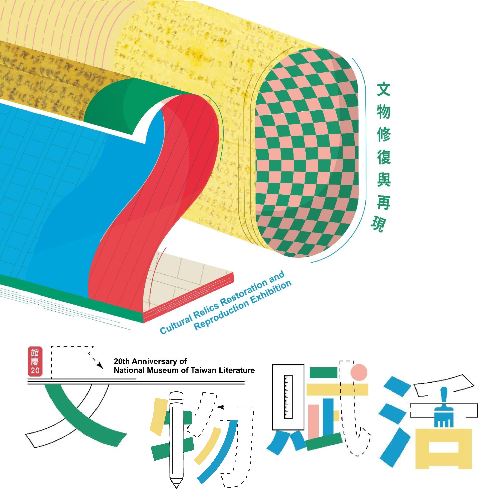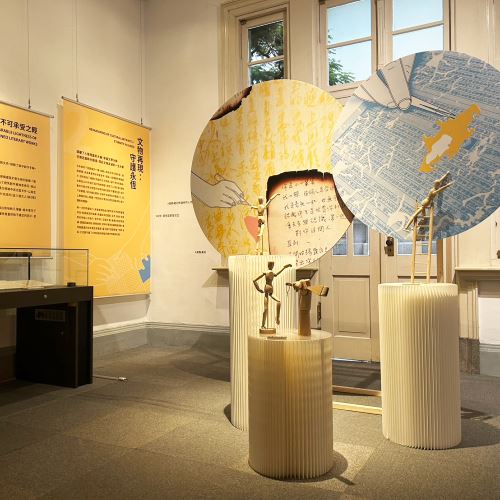
To continue the culture history of Taiwan and present the most appealing story narratives are the most important value for the museum on its path of collecting artefacts.
The museum has accumulated many touching stories while collecting or receiving donated artefacts. These artefacts are about life and associated with the history. All of these are imprinted on the texture of each artefact as well as in process of collecting and organizing them. Read and look closely to see the heartbeat of the artefact. In the process of relocation, they wait silently and begin another journey with a certain faith.
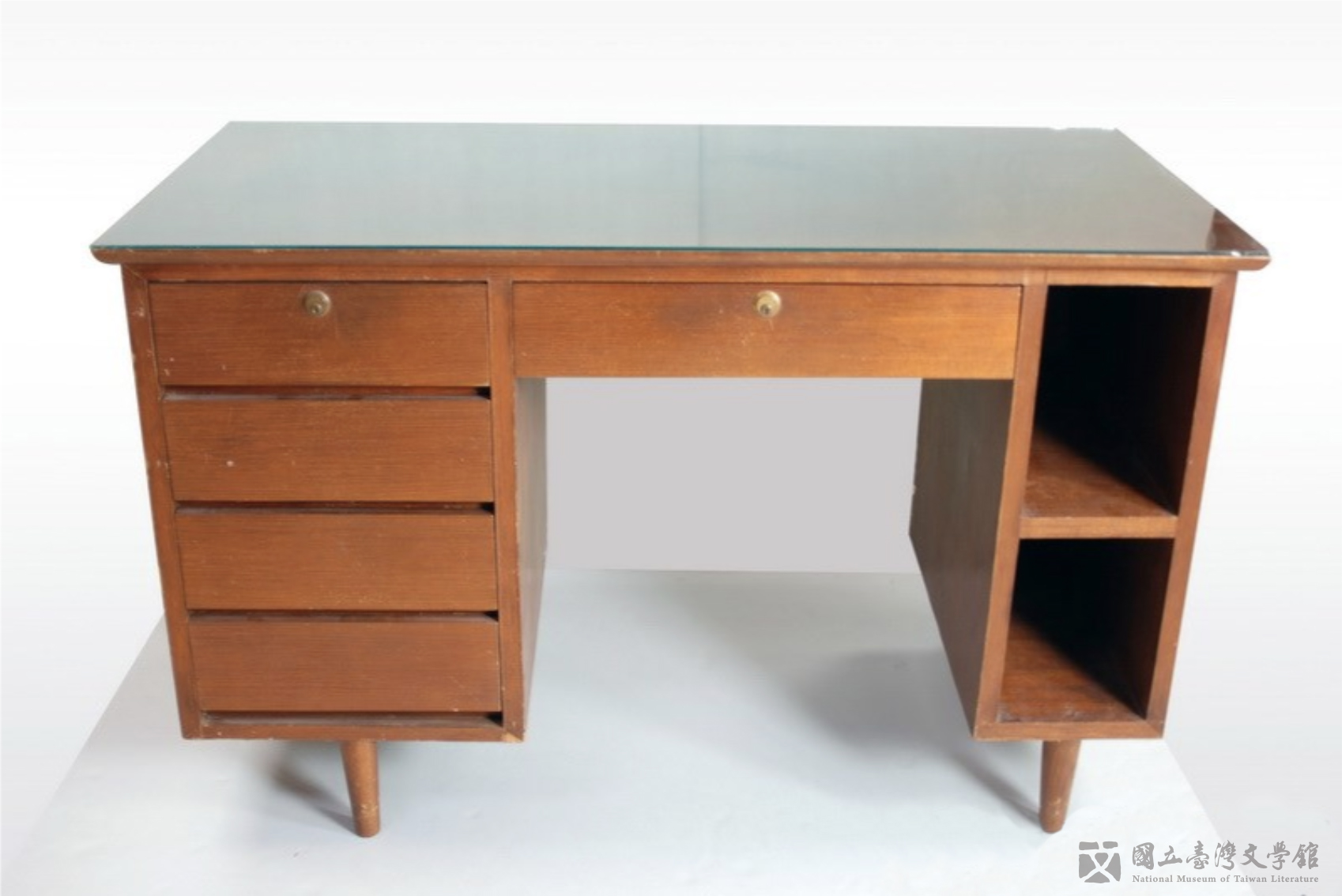
⭔ Yao Yi-wei's desk
Yao relocated to Taipei, Taiwan from Xiamen, China in 1949 and then moved to Muzha to settle down with her family. Yao wrote on this wooden desk. His works and teaching notes mark a marvelous chapter of in the history of theatre in Taiwan after the war. (Kept in National Museum of Taiwan Literature)
It was an afternoon in the office. The relatives and museum staff sat on the opposites sides of the table. On the table lay the procedures of collecting and preserving the artefacts placed on the table and the plan after the artefacts became a part of the museum's collection. It was a life's hard work by the author. By giving it to the museum, the author's children guarded and responded to the author's work in the literature scene. Individuals can only have such limited power. Thus, the museum puts together its effort in research and collection to pass on the artefacts and to begin a new wonderful chapter for the next era.
The majority of all the donated artefacts are manuscripts, letters between writers, and photos. The ones that are particularly eye-catching are Lin Hai-yin's elephant figurines. These figurines were donated by Lin's daughter Hsia Tsu-li and her husband Zhang Zhi-zhang, who made quite an effort to sort them out from Hsia's childhood home. The elephants give a clear portrayal of Lin's living room, which was once "a gathering place for almost the entire literature circle."

⭔ RECORDS OF CORRESPONDENCE, Lin Hai-yin
The words on the labels were written by Hsia Tsu-li. The book shows the records of correspondence with other writers in the 1990s. It is only a part of the many letters owned by Lin Hai-yin. The total number of letters exceeds one thousand. Spanning from 1970s to 1990s, the letters are witness to the literature circle created by Lin Hai-yin in the supplement of UNITED DAILY NEWS and BELLES-LETTRES MONTHLY. (Kept in National Museum of Taiwan Literature)

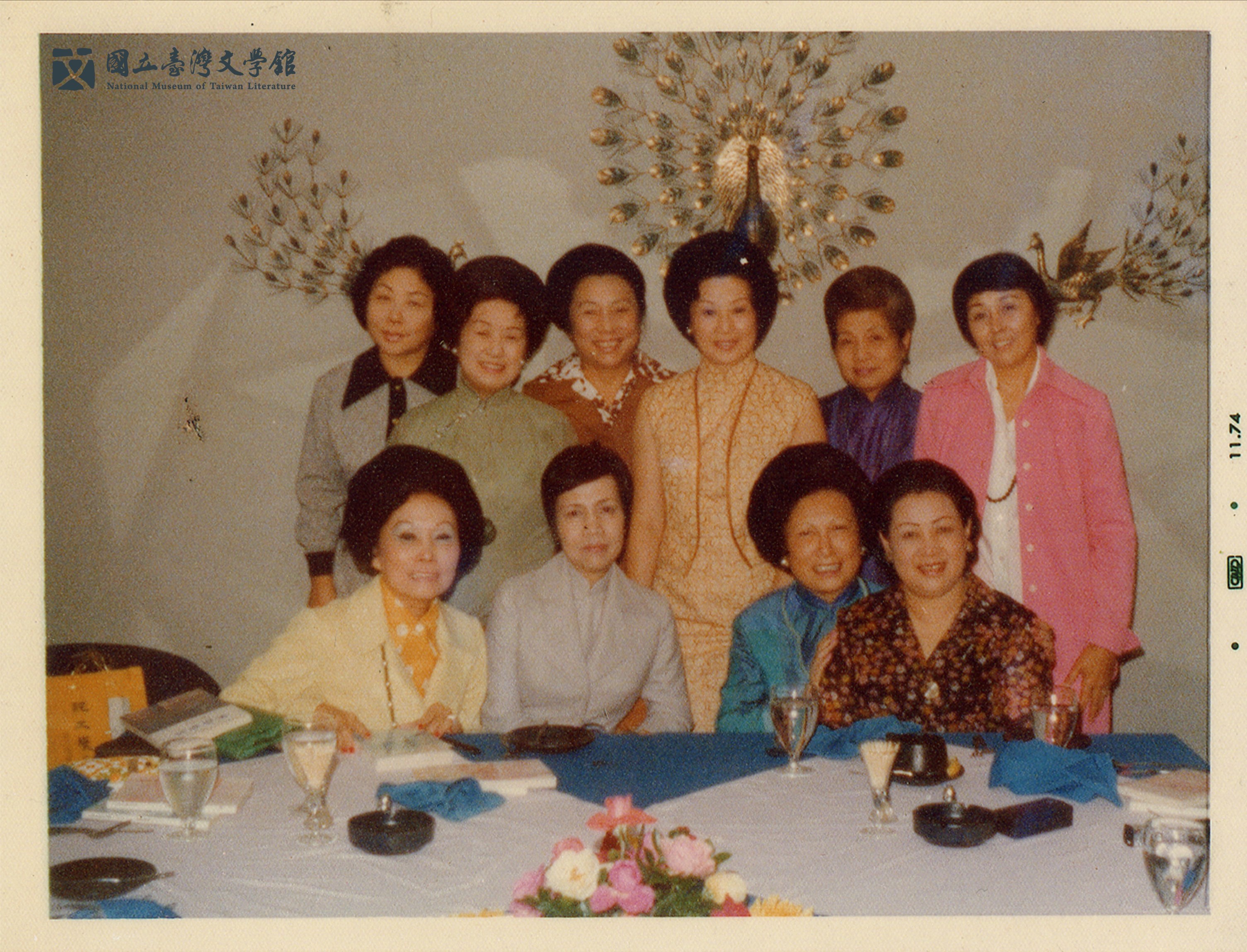
⭔ Group Photos of Liu Fang with Chen Xiang-mei, Huayan, Lin Hai-yin, Xu Zhong-pei, and Zhang Ming
Kept in National Museum of Taiwan Literature
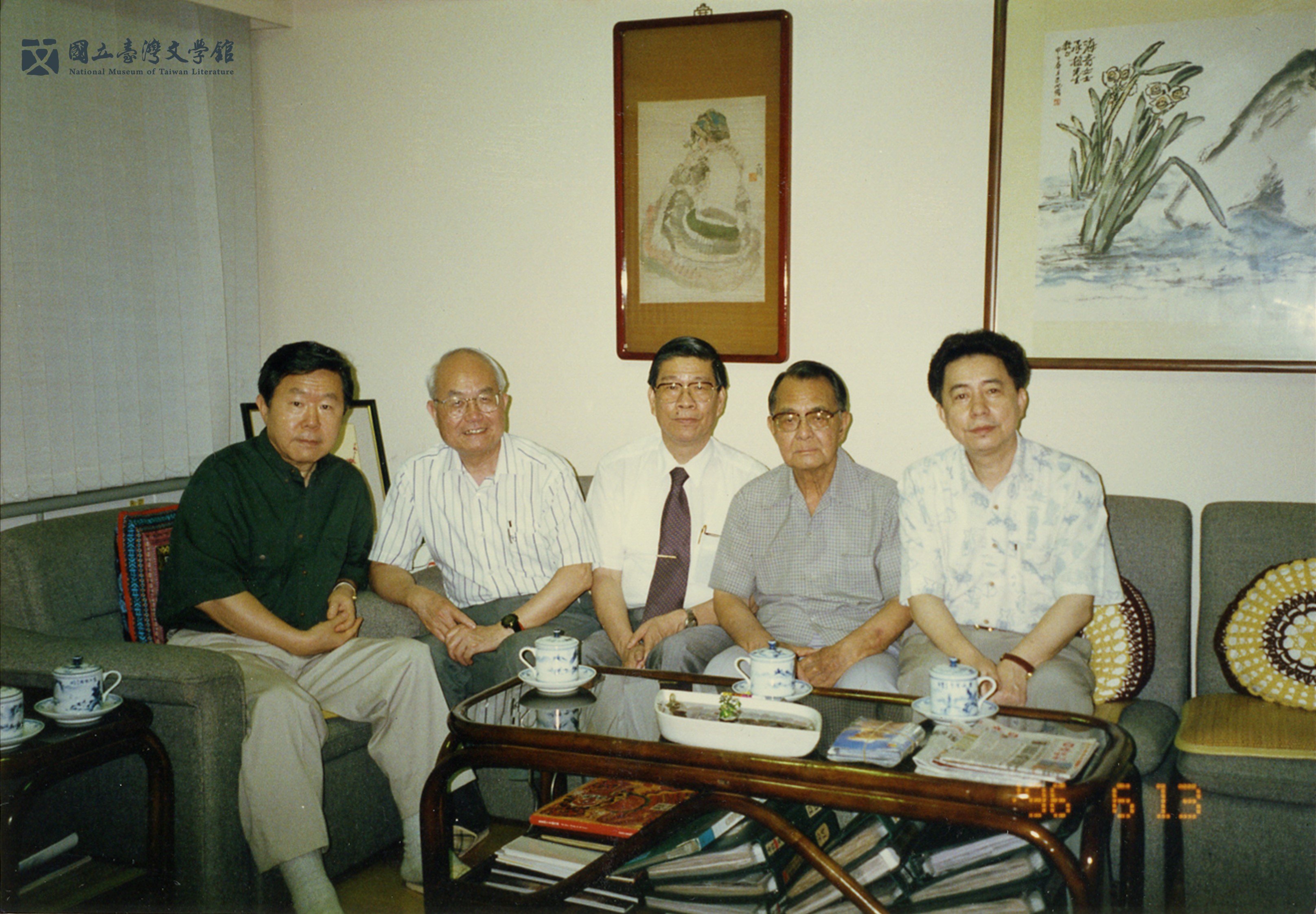
⭔ Lin Hai-yin and Ho Fan’s Collection of Literary Friends' Photos
 Lin Hai-yin and her husband Ho Fan were always together; wherever they were, it was a gathering place for literary friends. From right to left: Yin Di, Ho Fan, Tzeng Ching-wen, and Zheng Qing-mao.(Kept in National Museum of Taiwan Literature)
Lin Hai-yin and her husband Ho Fan were always together; wherever they were, it was a gathering place for literary friends. From right to left: Yin Di, Ho Fan, Tzeng Ching-wen, and Zheng Qing-mao.(Kept in National Museum of Taiwan Literature)
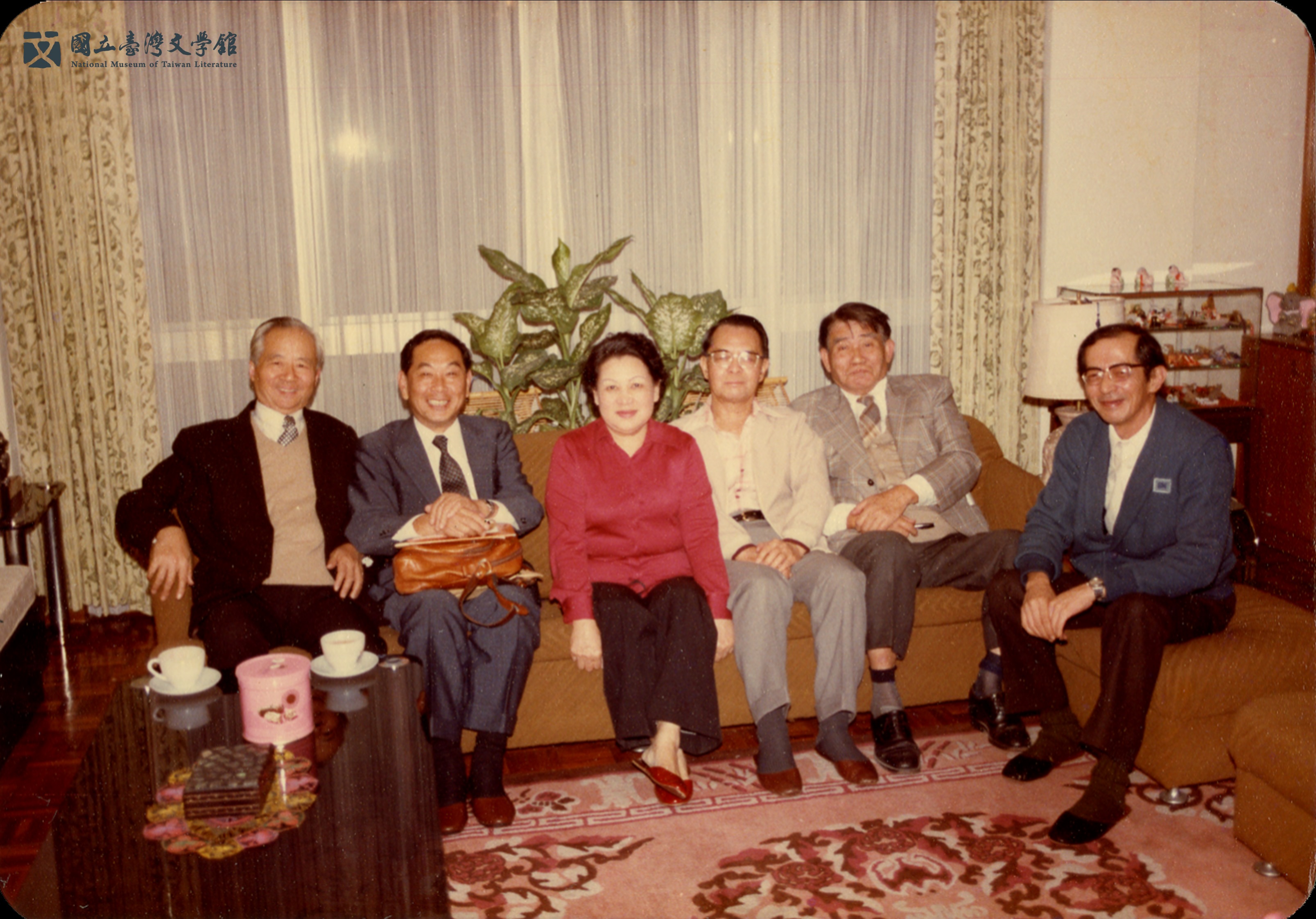
⭔ Photo of Huang Te-shih with Ho Fan, Lin Hai-yin, and Lin Liang at Lin Hai-yin's Home
Kept in National Museum of Taiwan Literature
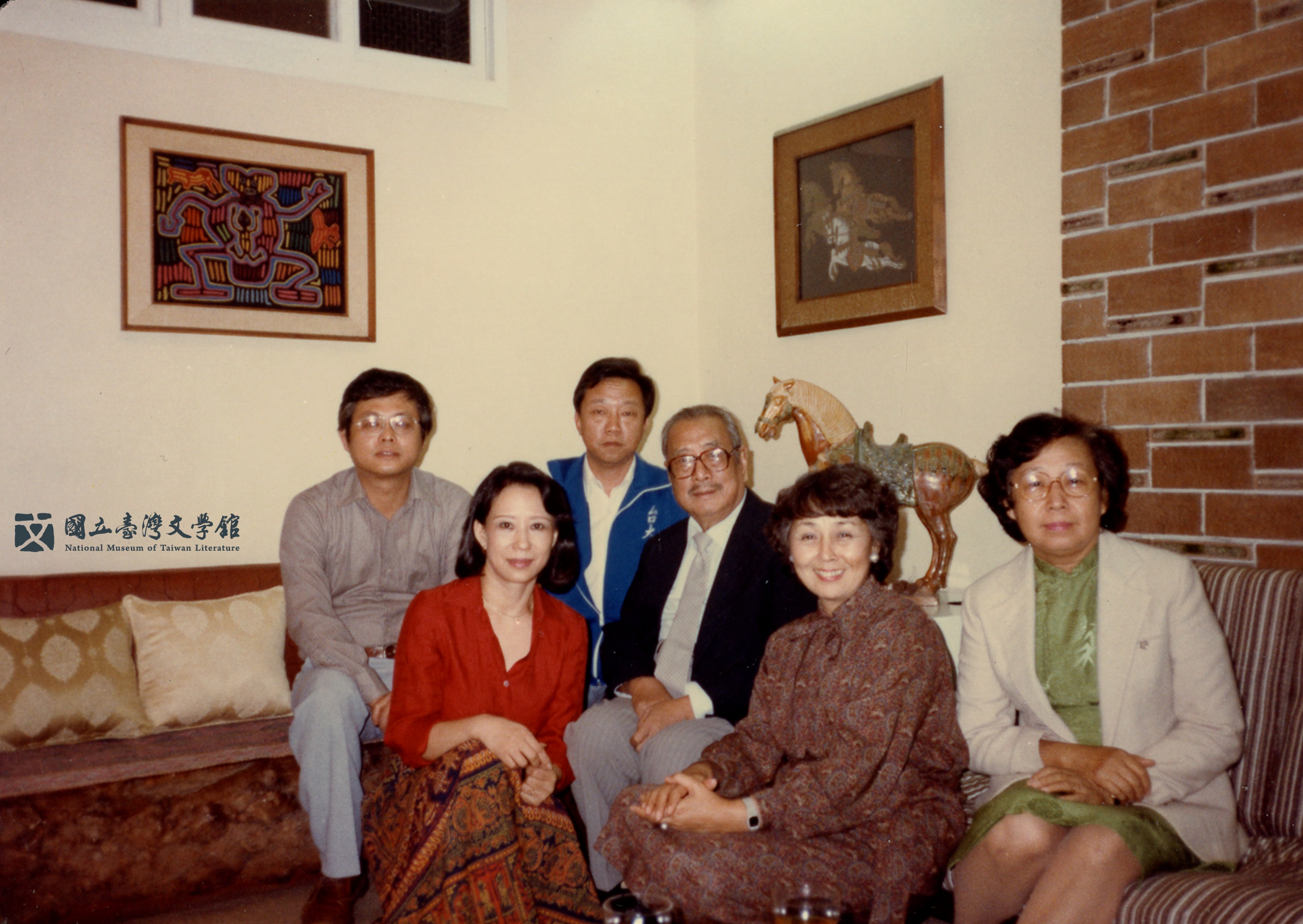
⭔ Lin Hai-yin and Ho Fan’s Collection of Literary Friends' Photos
Lin Hai-yin's living room, colloquially known as half of the literary world. Front left is Lin Wen-yue, back left is Yang Mu, front right is Chi Pang-yuan, second right is Nancy Chang Ing, and the person seated in the center is Tai Jing-nong.(Kept in National Museum of Taiwan Literature)

⭔ Photo of Zhang Ming, Liu Fang, Chi Chun, Lin Hai-yin, and Guo Jin-xiu
Kept in National Museum of Taiwan Literature
The Arch that Carrying Literature
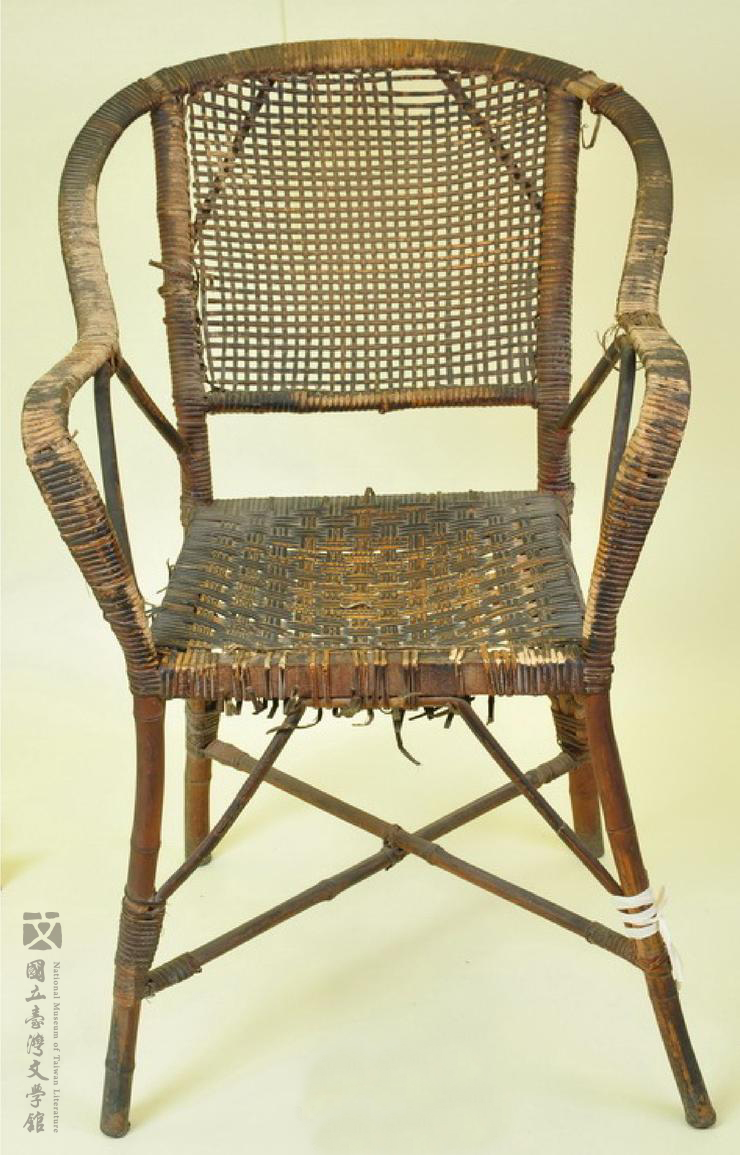
⭔ Yeh Shih-tao's wicker chair
Ye Shitao had the habit of sitting in this wicker chair to write. Used in his study since the 1960s and for over 30 years, it holds immense sentimental value. Chen Fang-ming described the scene when visiting Ye in 1989: "It turns out that the calamities he talked about in his writings are not merely spiritual. A worn-out wicker chair closely adheres to a mottled writing desk, and beyond the glass windows is the clamor of the city... I used to see photos of him sitting at his desk writing in books. Because they were printed in black and white, I thought it was a refined space." After this wicker chair, imbued with literary force, was acquired by the museum, it went through meticulous restoration and 3D scanning. It even became a key item for completing levels in the VR shooting game ISLAND OF DREAM BEASTS, experiencing a fantastical journey after entering the museum. (Kept in National Museum of Taiwan Literature)
In the study rooms of Taiwanese writers, there's always a wicker chair. Its material and construction are suitable for beating the heat in a tropical climate. During cold seasons, covering it with a blanket provides warmth. It accompanies the writer through all four seasons, solitary late nights, and the break of dawn. It is a witness to the germination of creative thoughts and the summoning of muses.
The kind of chair a writer sits in doesn't necessarily dictate the kind of literature they created. However, sometimes the choice or necessity of using certain objects endows these objects with a unique spirit.
— Chen Ling-yang, "Always There, Just Without Presence — The wicker Chair and Its Yeh Shih-tao."
Yeh Shih-tao's wicker chair has accompanied him every day since he settled down in Zuoying, Kaohsiung. The traces of smoke on the armrests seem like myriad thoughts extending from the tips of his fingers to the backbone that supports him, reaching the center of his thoughts. This rattan chair was donated to our museum in Yeh Shih-tao's later years. At that time, he was still writing and reading daily. The museum purchased what appeared to be a comfortable multifunctional chair for his use, but it was politely declined. "The wicker chair feels better," Yeh said, his voice tinged with laughter, filling his simple study-cum-bedroom. Outside, the sounds of bustling traffic and conversations between the writer and visitors mixed. Decades of writing, these sounds, words, achievements, and myriad thoughts are all absorbed into the texture of the wicker chair, engraving memories for future generations.
A documentary on the restoration of Yeh Shih-tao's wicker chair aims to recreate this chair's significance in literary history. How does the restorer balance the historical significance of the artifact with its functionality? They assess the degree of restoration and prioritize maintaining its current condition while executing appropriate restoration and upkeep. The object left behind is not just an ordinary wicker chair; it also carries the ethos of past generations.
⭔ The Arc of Literature — Yeh Shitao's Repair Journal of Wicker Chairs
Kept in National Museum of Taiwan Literature
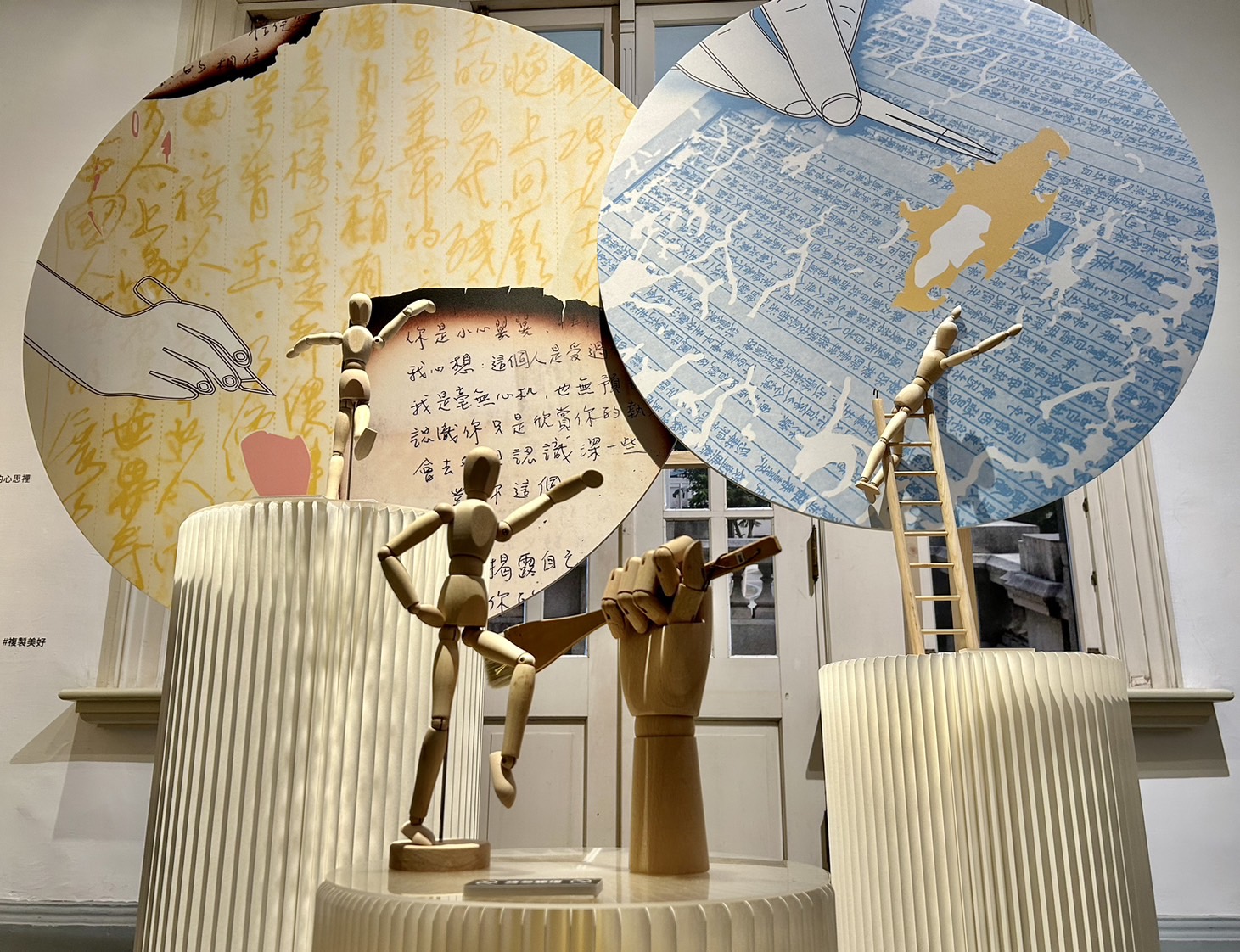
⭔ The Soul of a Craftsman: Reviving the Spirit of Ink and Brush
Restorers weave through cultural relics, accumulating efforts bit by bit. In the process of reassembly and refurbishment, they revive the splendid elegance of these artifacts, perpetuating the everlasting brilliance of literature.

